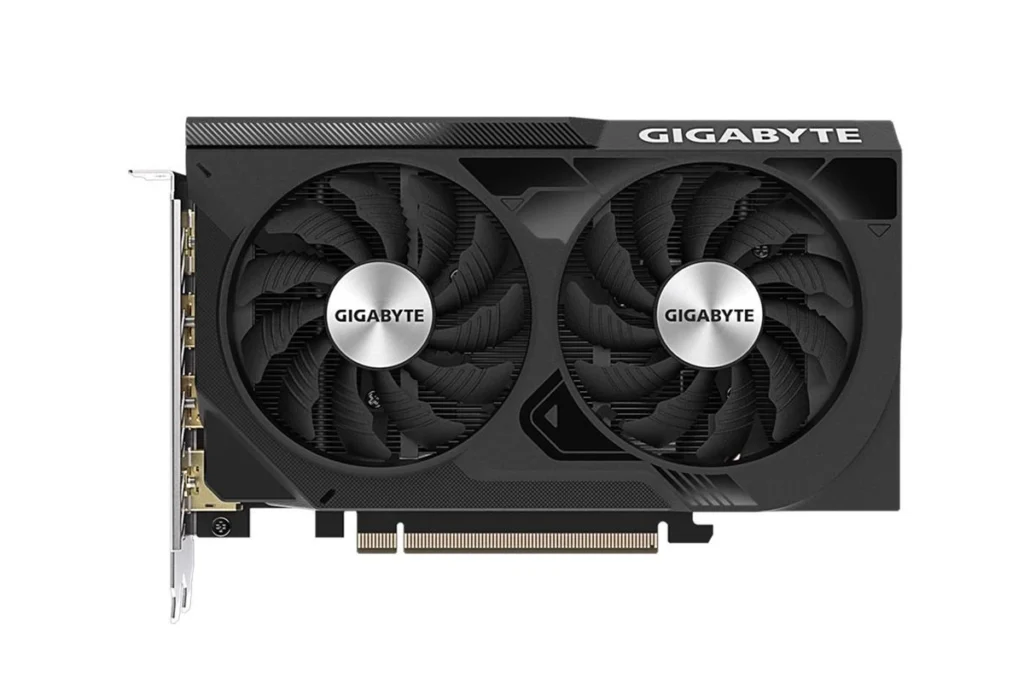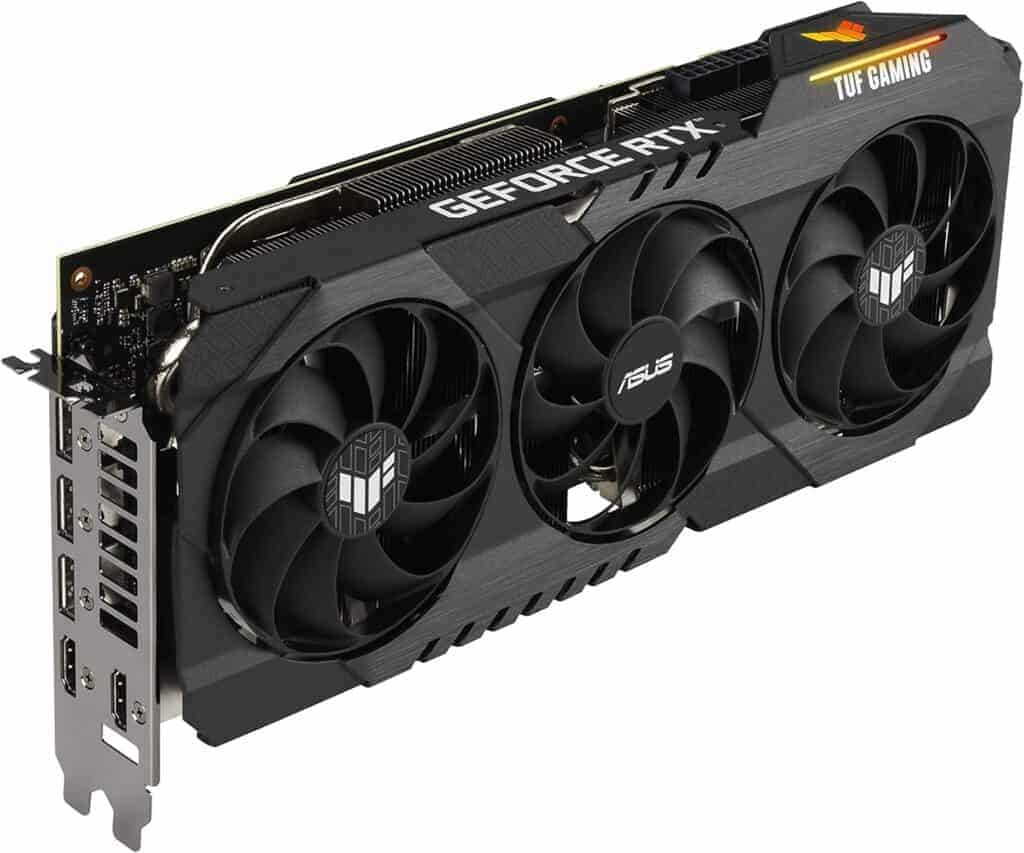When upgrading a PC with a new graphics card, it is crucial to ensure that the GPU is compatible with the motherboard. This compatibility affects whether the GPU will fit physically, receive sufficient power, and operate effectively within the system. In reality there’s only 1 GPU compatibility checker you need and that’s PCPartpicker. They have the data on nearly every commercially released GPU so you can just put your components in there and be done.
Online GPU Compatibility Checkers
| Rank | Checker Name | Description |
|---|---|---|
| 1 | PCPartPicker | Build a PC part list and filter for compatible components, including GPUs. Great for checking compatibility across different parts. |
| 2 | OuterVision PSU Calculator | Primarily a power supply calculator, but also checks for compatibility between your chosen GPU and other components. |
| 3 | PC Buider | Similar to PCPartPicker, allows building a PC part list and checking for compatibility. |

Note: While these online checkers are helpful for a basic compatibility check, it’s important to refer to the official documentation of your specific motherboard and other components for the most accurate information.
Understanding GPU and Motherboard Compatibility
Importance of PCIe Slots and Versions
Motherboards have PCI Express (PCIe) slots that connect to GPUs. The most common slot for a graphics card is the PCIe x16 slot, as it offers the highest bandwidth, ensuring that the GPU can communicate with the CPU as fast as possible. Motherboards and GPUs are backward compatible between PCIe 4.0 and 5.0 as well as the older PCIe 3.0, but for optimum performance, matching the motherboard’s PCIe version with the GPU can make a difference. For example, a PCIe 4.0 GPU will work in a PCIe 3.0 slot, but it won’t perform to its full potential.
Checking Physical Fit and Clearances
The size of the graphics card must be accounted for to ensure it fits inside the PC case without any issues. There should be enough clearance for the length and height of the card, and adequate space for cooling solutions to maintain optimal temperatures. Large GPUs might block adjacent expansion slots or cause issues if there is limited airflow. It’s important to measure the available physical room within a PC case and compare it to the dimensions of the graphics card before purchasing.
Power Supply Considerations
A new GPU will have specific power requirements that must be met by the power supply unit (PSU). Graphics cards have power connectors, commonly 6-pin PEG or 8-pin PEG, and the PSU must have the corresponding connectors available. Additionally, each GPU has a minimum PSU capacity rating which provides a guideline for the minimum PSU wattage needed to operate the card safely. It’s important to check that the system’s PSU can handle the new GPU’s power requirement to avoid any electrical issues.
Ensuring Optimal GPU Performance
To achieve the best performance from a graphics card, compatibility with the motherboard and optimal cooling are critical. These factors prevent bottlenecks and keep the system running smoothly.
Avoiding Bottlenecks and Compatibility Issues
To avoid any performance hit, one must ensure the graphics processing unit (GPU) and central processing unit (CPU) work in harmony. A powerful GPU paired with an outdated CPU can cause bottlenecks, where the CPU can’t keep up with the GPU’s speed, hurting framerates in gaming. The motherboard’s bandwidth plays a role too; a PCIe x16 slot is typically needed for modern graphics card to perform at its full potential. When building a gaming PC or upgrading, one should aim for balance between the GPU and the rest of the system, including RAM and the CPU — an Intel Core i7 or equivalent is often a good match for high-end gaming.
| GPU Model | Suggested CPU | Minimum RAM |
|---|---|---|
| GTX 1050 | Intel Core i5 or equivalent | 8GB |
| RTX 2080 Ti | Intel Core i7 or equivalent | 16GB |
| RX 5700 XT | AMD Ryzen 5 3600 or equivalent | 16GB |
Maximizing Airflow and Cooling Efficiency
Good airflow is key in maintaining optimal temperature and keeping the hardware cool. When one installs a GPU, they should consider the space around it. There should be enough room for air to circulate freely. Adding case fans can improve cooling, as they help push the hot air out and pull cool air in. In addition to fans, dedicated cooling solutions for GPUs, such as aftermarket heatsinks or liquid cooling systems, can be installed to ensure performance doesn’t drop due to high temperatures. One must always check the specifications to ensure their case can accommodate these cooling solutions.
- Proper Airflow Setup:
- Intake fans at the front/bottom
- Exhaust fans at the back/top
- Clear path for air to flow through
Graphics Card Specifications and Upgrade Path
When upgrading or installing a new GPU, there are several specifications to consider to maintain optimal performance. The graphics card should align with the gaming rig’s intended use. For casual gaming, a GTX 1660 or RX 5500 XT would suffice, whereas an RTX 2080 Super or RTX 2070 Super would better suit demanding games and higher framerates. One should also look at future-proofing — leaving space for multiple GPUs and ensuring the motherboard and power supply can handle it. Driver support and the ease of overclocking are also vital considerations.
Upgrading to a new model can provide a significant boost in performance. Here are some popular upgrade paths:
- From GTX 970 to GTX 1660 Super
- From GTX 980 to RTX 2060 or RX 5600 XT
- From RTX 2070 to RTX 2080 Ti (for enthusiast-level performance)
Frequently Asked Questions
When you’re upgrading your PC, making sure your new graphics card will work with your motherboard is key. It can save you time, money, and a major headache. Here are some common questions and clear answers to guide you through GPU compatibility.
How do I know what GPU is compatible with my motherboard?
Compatibility hinges on a few factors like the available PCIe x16 slot on your motherboard, power supply unit (PSU) connections, and physical space in your case. Check that your motherboard’s PCIe version aligns with your GPU for peak performance.
What graphics cards are compatible with ASUS motherboards?
ASUS motherboards often support a wide array of GPUs, provided there’s a PCIe x16 slot. To be certain, consult the ASUS support site or your motherboard’s user manual for a list of compatible models.
How can I check if a GPU is compatible with my current motherboard for gaming?
A gaming GPU needs a PCIe x16 slot, sufficient PSU capacity and the appropriate connectors. Also, make sure the card physically fits in your case and that its performance aligns with your gaming needs without causing a bottleneck with your CPU.
Are there any resources or charts available for checking GPU to motherboard compatibility?
Yes, manufacturers’ websites and some tech forums provide compatibility charts. For a more tailored approach, using PC building tools online can help you match components accurately.
How do I determine if my CPU will support a particular GPU?
Avoiding a bottleneck means ensuring your CPU can handle the GPU’s power. If the GPU is high-end and your CPU is several years older, a performance mismatch may occur. Look for balanced pairings in gaming benchmarks and manufacturer guidelines.
What steps should I take to ensure a GPU is compatible with my system before purchasing?
First, verify the physical fit and PCIe slot availability. Assess your PSU for adequate power and connectors. Consider the GPU’s performance relative to your CPU, and finally, check vendor and community forums for any known compatibility issues with your existing setup.







